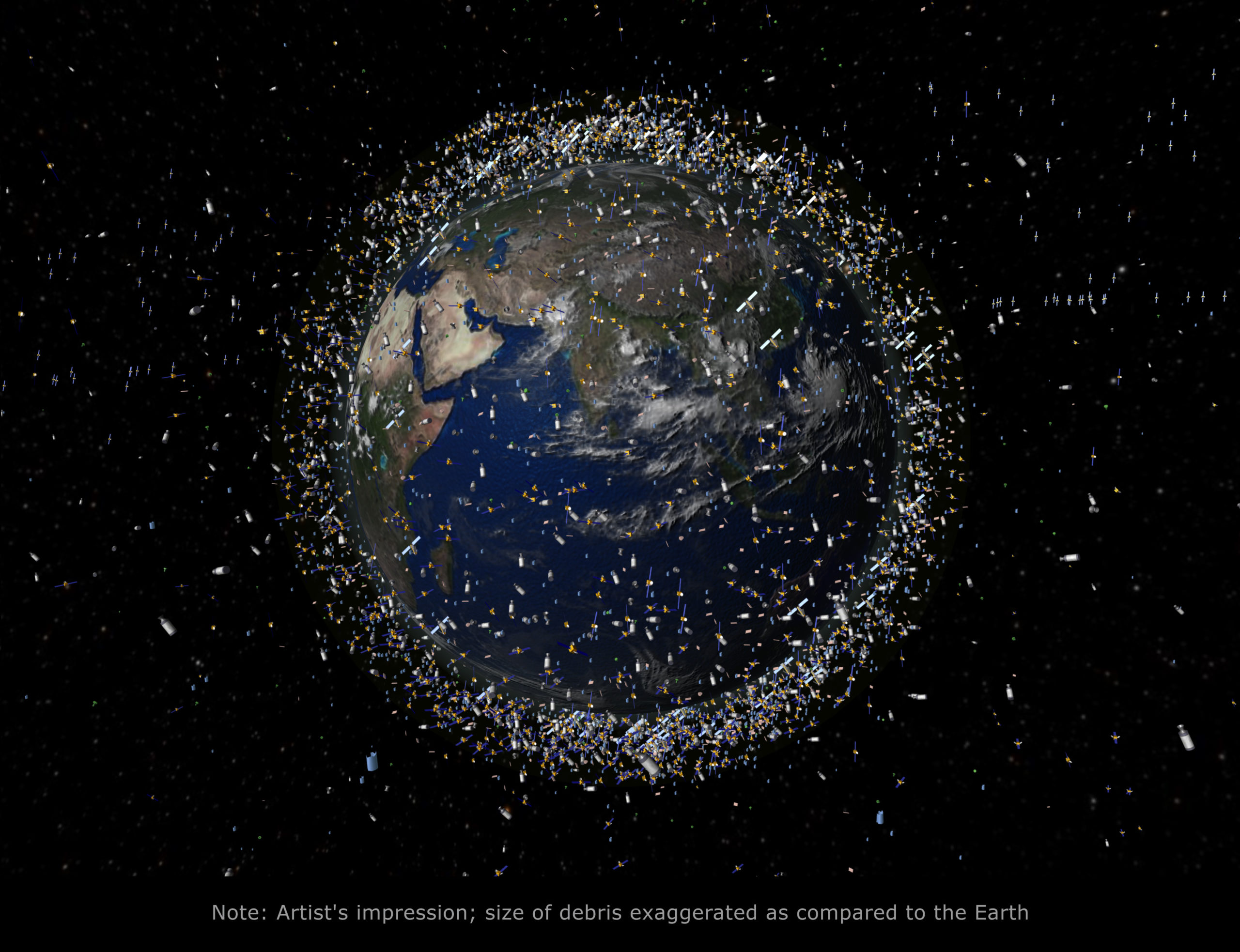Stay Up to Date
Submit your email address to receive the latest industry and Aerospace America news.
On the U.S. side, it’s “grossly irresponsible behavior,” but to Russia the fragments “do not pose any threat”
LAS VEGAS — The reaction of the space community here in the United States comes in stark contrast to how Russia has cast the environmental impact of its anti-satellite test, conducted Nov. 15 Moscow Time.
The destruction of Russia’s defunct COSMOS 1408 satellite via an ASAT missile created hundreds of thousands of new pieces of debris, NASA and U.S. Space Command said. The crew aboard the International Space Station, including two Russian cosmonauts, temporarily sheltered in the docked Crew Dragon and Soyuz capsules, ready to leave if necessary.
The strike exhibited “a deliberate disregard for the security, safety, stability, and long-term sustainability of the space domain for all nations,” said U.S. Army Gen. James Dickinson in a U.S. Space Command statement released Monday.
In a much shorter statement posted to the Russian Defense Ministry website today, Defense Minister Sergei Shoigu said “the resulting fragments do not pose any threat to space activities.”
Orbital debris experts, including here at the AIAA ASCEND conference, disagree.
The fragments of COSMOS 1408, a Soviet Union-era surveillance satellite that’s been inactive since the 1980s, will “linger in LEO for 5-10 years,” said Jonathan McDowell, an astronomer at the Harvard-Smithsonian Center for Astrophysics reached by phone. He pointed to the 2007 test conducted by China. Many of the 3,000 pieces of debris created in that explosion remain on orbit today, said McDowell, who is one of those who routinely reviews the U.S. Space Force catalogue of space objects. Several pieces of debris created by the U.S. in a 1985 ASAT test also remained in orbit for at least 10 years.
By contrast, a 2008 U.S. satellite downing and one conducted by India in March 2019 created smaller amounts of debris because they intercepted satellites orbiting at a lower altitude.
But that doesn’t mean such actions are necessarily safe. “That’s kind of like saying ‘I only punched you a little bit,’” McDowell said.
In the 2008 U.S. intercept, Operation Burnt Frost, the U.S. Navy struck a non-functioning National Reconnaissance Office satellite whose leftover hydrazine fuel the Pentagon said posed a possible safety risk to people on the ground. The U.S. Navy fired a Standard Missile 3 and intercepted the satellite at an altitude of about 240 kilometers. One end of the resulting debris cloud was quickly dragged down into the atmosphere and burned up, McDowell said. By 18 months later, all the remaining debris had burned up in the atmosphere.
That won’t be the case for the debris created by the Russian ASAT test, which U.S. Space Command said likely consists of 1,500 pieces of “trackable” debris plus “hundreds of thousands” of smaller fragments that are more difficult for the U.S. Space Force’s 18th Space Control Squadron to track and catalog.
It’s those smaller pieces that pose the greatest risk for the growing number of satellites on orbit, including those launched by operators attempting to build out broadband megaconstellations. Since 2019, SpaceX alone has launched about 1,800 satellites for its Starlink constellation, and has approval from the U.S. Federal Communications Commission to launch a total of 4,400.
Given that satellite launches are only projected to increase, the Russian ASAT test is “grossly irresponsible behavior” that should be regulated via an international treaty, said United Launch Alliance CEO Tory Bruno, speaking here at ASCEND during the panel discussion, “Proliferated LEO: Managing Multiple Megaconstellations.”
That treaty, he said, should be focused on the most impactful transgressions “that threaten the global commons.” Other best practices should be left to the space industry to decide. In the case of megaconstellations, for instance, the space industry should form an industry association to create guidelines, such as requiring megaconstellation operators to reach out to one another in the event of a collision risk between satellites.
“That creates a path toward liability for people who don’t do that,” he said.
SpaceX is already doing this to some extent for Starlink, said Bill Gerstenmaier, the company’s vice president of build and flight reliability and previously the long-time head of human spaceflight at NASA. For instance, SpaceX in October shared precise locations of its Starlink satellites with ULA as the company prepared to launch NASA’s robotic probe Lucy.
“We think keeping space clean is very important,” Gerstenmaier said. “There’s no business if there’s collisions.”
About cat hofacker
Cat helps guide our coverage and keeps production of the print magazine on schedule. She became associate editor in 2021 after two years as our staff reporter. Cat joined us in 2019 after covering the 2018 congressional midterm elections as an intern for USA Today.
Related Posts
Stay Up to Date
Submit your email address to receive the latest industry and Aerospace America news.




